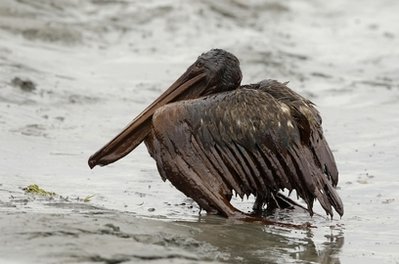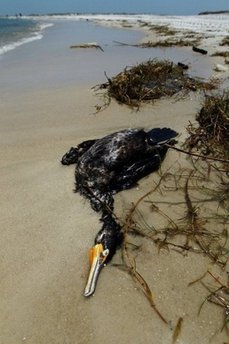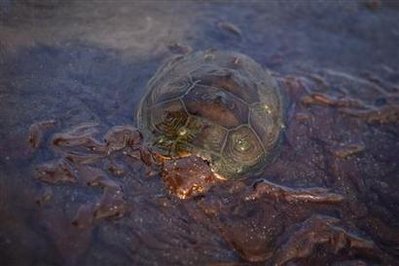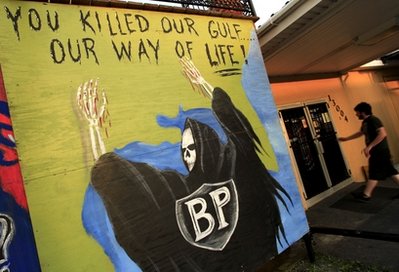The food industry is the one industry that will survive a nuclear war. No matter what state the world is in, people need to eat. But with the BP oil disaster growing more massive each day, generations of small seafood businesses along the Gulf of Mexico are laying off all their employees and closing the doors because the food has become poisoned with oil. The issue is those doors may stay closed forever because the oil will be around longer than most people live.
The images are heart wrenching, tragic and iconic, and that is just what our eyes tell us. The reality is it will be a year or more before we even come close to sorting out the final toll of damages. The damage to the food chain will be very significant. Fish ‘A’ ingest the oil and gets sick or dies. Fish ‘B’ eats fish ‘A’ that is now toxic and also gets sick or dies. Fish ‘C’ to n repeats the same cycle as the oil becomes no less toxic. Multiply this cycle millions of times and you just start to see the tip of the iceberg. The oil is so wide spread and at different depths thanks to the million+ gallons of chemical dispersant that is no less toxic, fish swimming at all depths are likely to encounter the oil.
It gets better, the oil is getting carried away by the Gulf stream not to disappear, but simply contaminate a wider area. Have a look here. What that means is for the most part the entire Atlantic ocean will eventually see the effects of the BP disaster.
Ironically the sea currents will eventually take the oil to shores nearest the home office of BP. As the oil is dark it naturally will absorb heat from the sun raising the sea temperature and provide extra fuel for hurricanes in a year the predictions say a busy season with nearly double the storms.
keeping in mind the oil does not get less toxic each time it is consumed, you start to see the lasting effects on the global food chain. Only when the oil is finally broken down by naturally occurring microbes will the disaster come to an end, but with the amount of oil spilled thus far that will not happen before your unborn children finish college.
Comparing to the Exxon Valdez spill, and the amount of time before the leak is stopped, every 8 to10 days is equal to 1 Exxon Valdez spill. With the projections saying August before the possible capping happens, we are looking at a spill of 16 to 22 super tankers. The Exxon Valdez tanker is/was 301 meters long, 50 meters wide, 27 meters depth (987 ft, 166 ft, 88 ft).
The BP pipe has an inside diameter of 20 inches. Do doing a little math and you will find that .735 or roughly 3/4 of an inch of flow is 1 US gallon. When you look at the pictures you will see the oil is gushing at roughly 30 inches per second or about 40 gallons per second. From there you can do your math in there are 86400 seconds in a day so that means 345600 gallons per day times the number of days.
So to summarize, the food industry will survive a nuclear war, but the food may not survive a massive oil spill. You can connect the dots yourself as to what that means to the world, and what it means to you as well. Sooner or later that oil will find its way to every corner of the planet.









